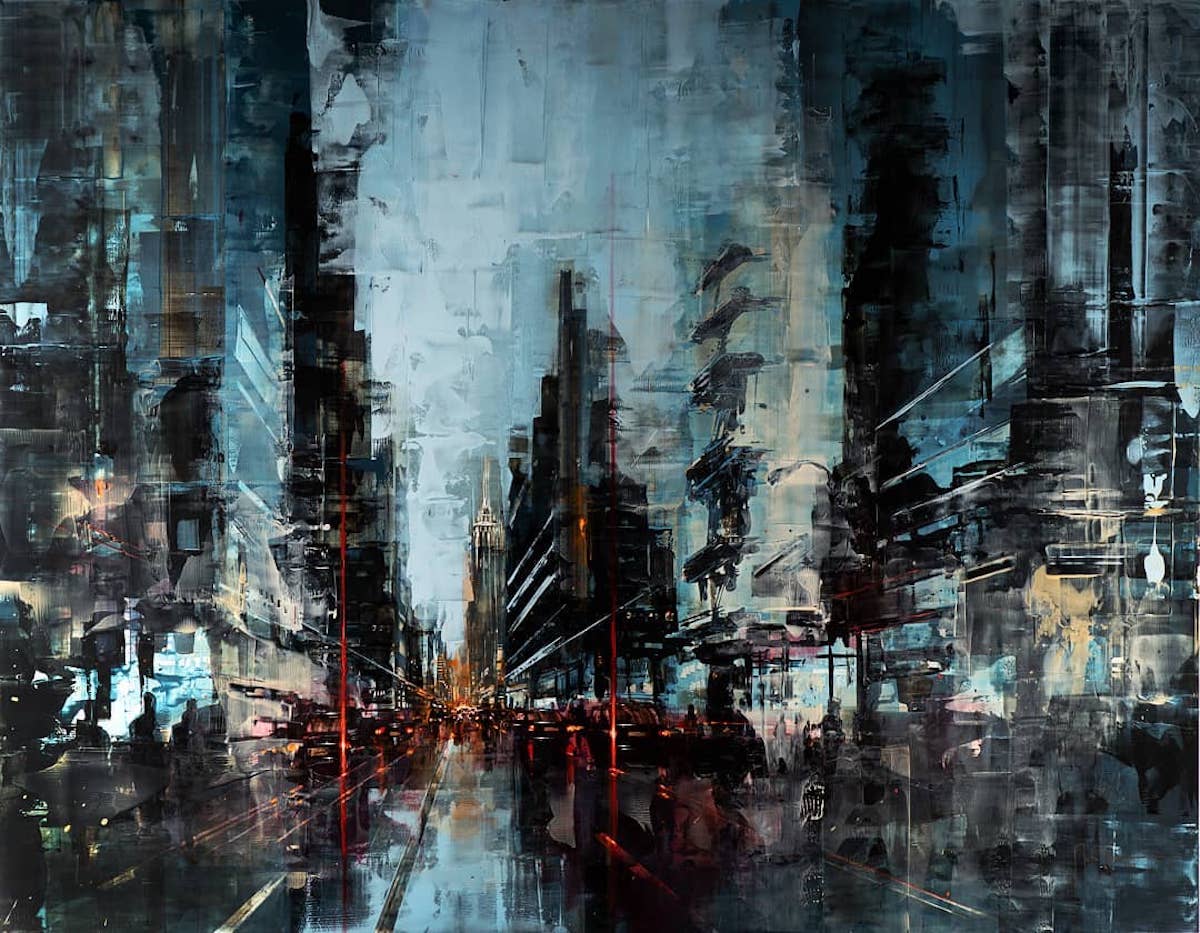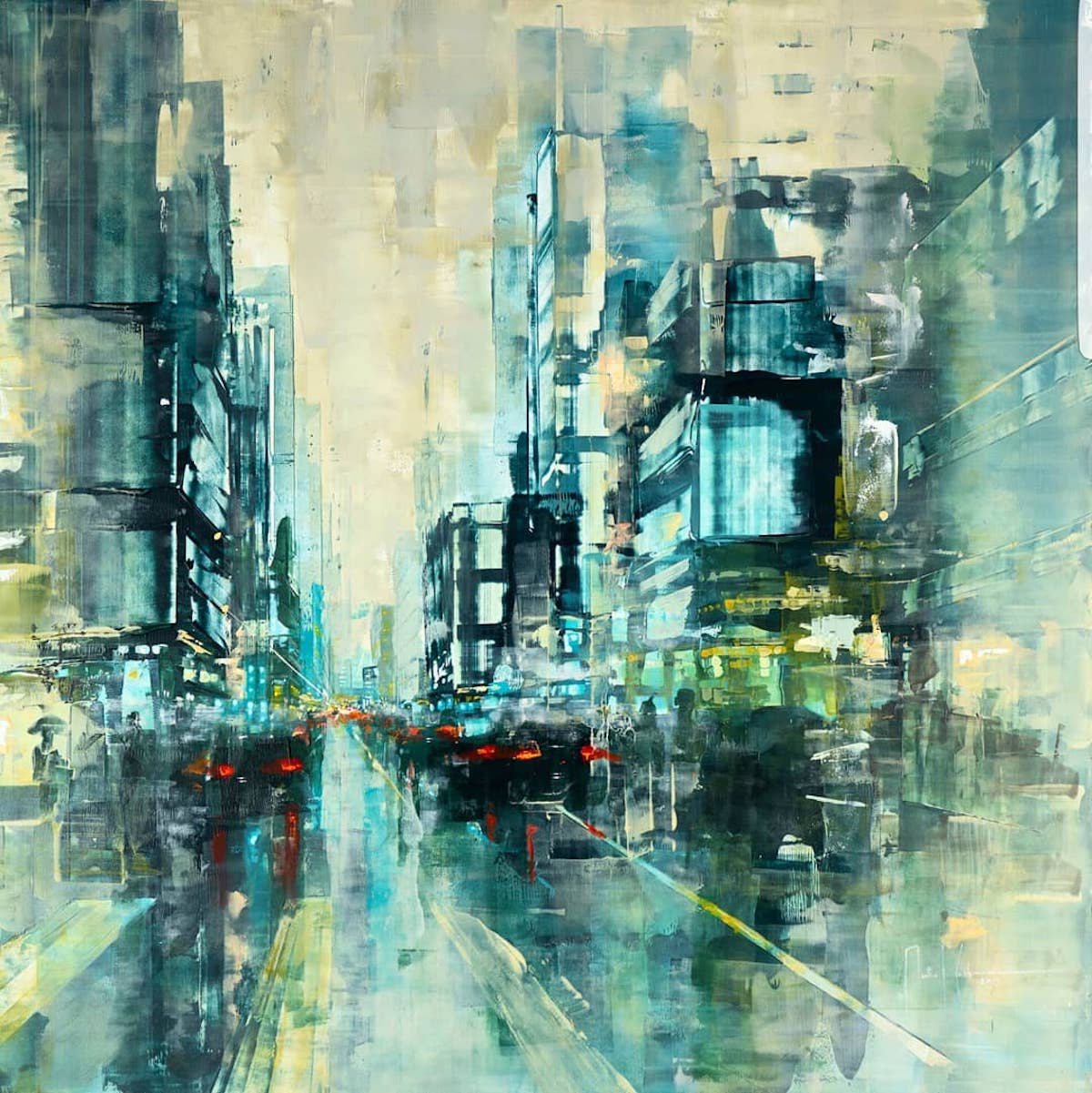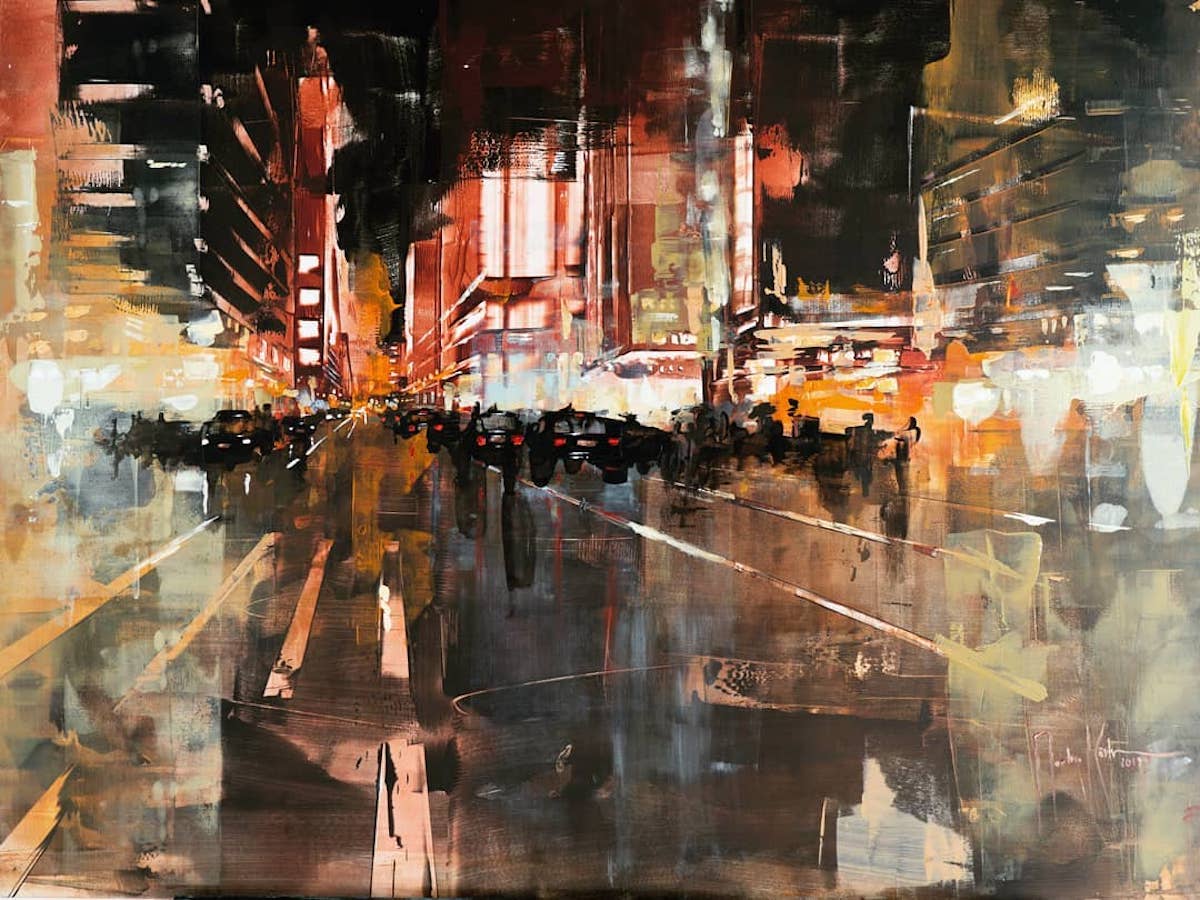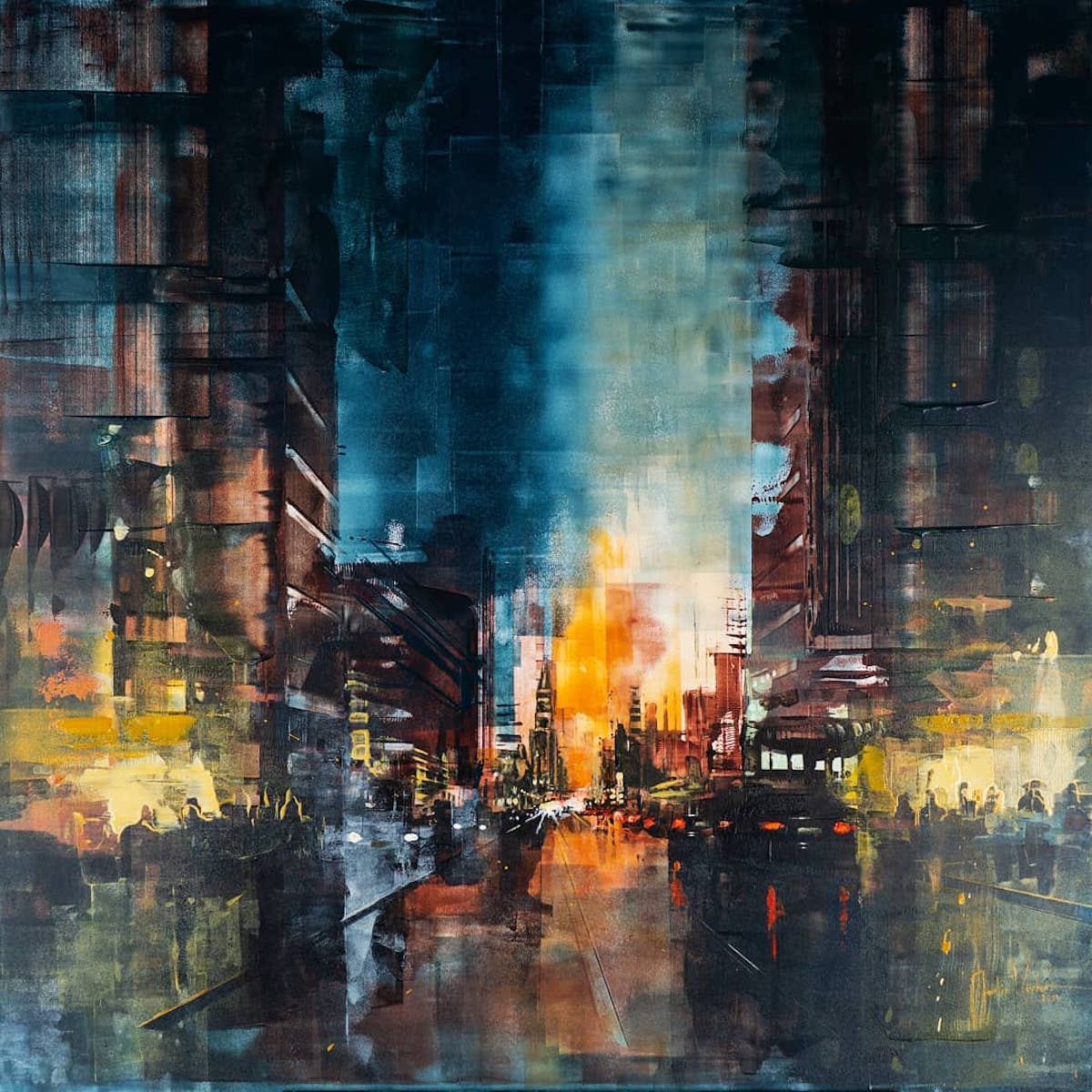
It can be difficult to encapsulate large cities such as New York and Hong Kong in just one painting. But for German artist Martin Köster, he welcomes the challenge. Using expressive brushstrokes and a colorful palette of oil paints, he manages to capture the intricacy of architectural details and the buzz of urban life when it shines best—at night. It’s in the darkness that the magic of these places is revealed. “Lights and reflections dance on buildings and cars,” Köster says of his work. “The viewer is drawn into the vanishing point of the pictures.”
Although Köster began with cityscapes inspired by places in Germany, his success has allowed him to create paintings around the world. This includes other European countries, Asia, and the United States. While the architectural styles may change from location to location, the artist always gravitates to how cities transform after dark. “I’ve always been fascinated by light in paintings,” he explains. “When rays of light break out of dark corners and bring cities to life, I feel beauty.” This passion for life can be seen in the way headlights from passing cars are reflected onto the dark streets, and how the illumination from inside stores and restaurants bleeds into the outside environment. “I like the idea that every source of light in the city tells its own story,” Köster continues. “When I walk through a new city, I always walk slowly and discover these stories.”
We had the chance to speak with Köster about his large oeuvre of cityscape paintings and how he approaches each piece. Read on for My Modern Met’s exclusive interview.
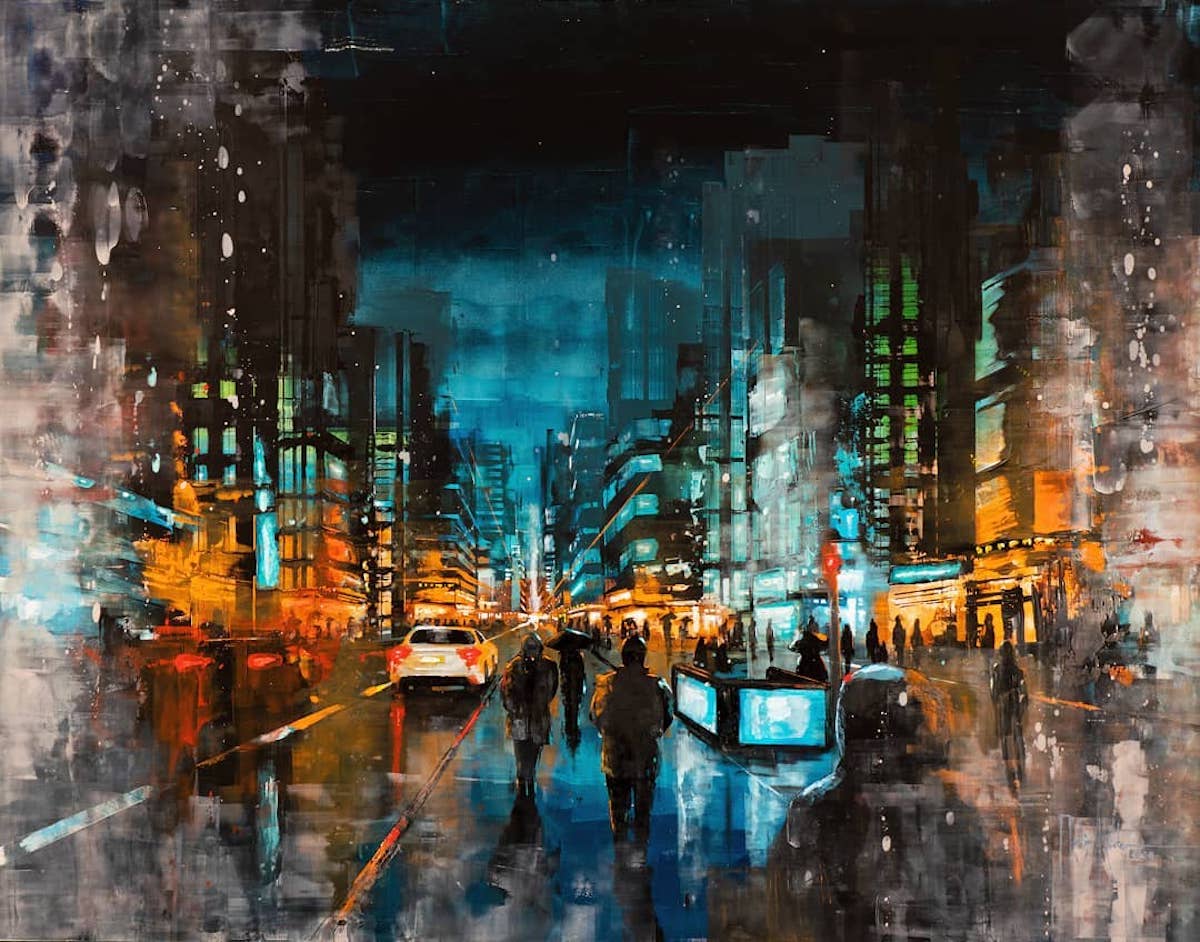
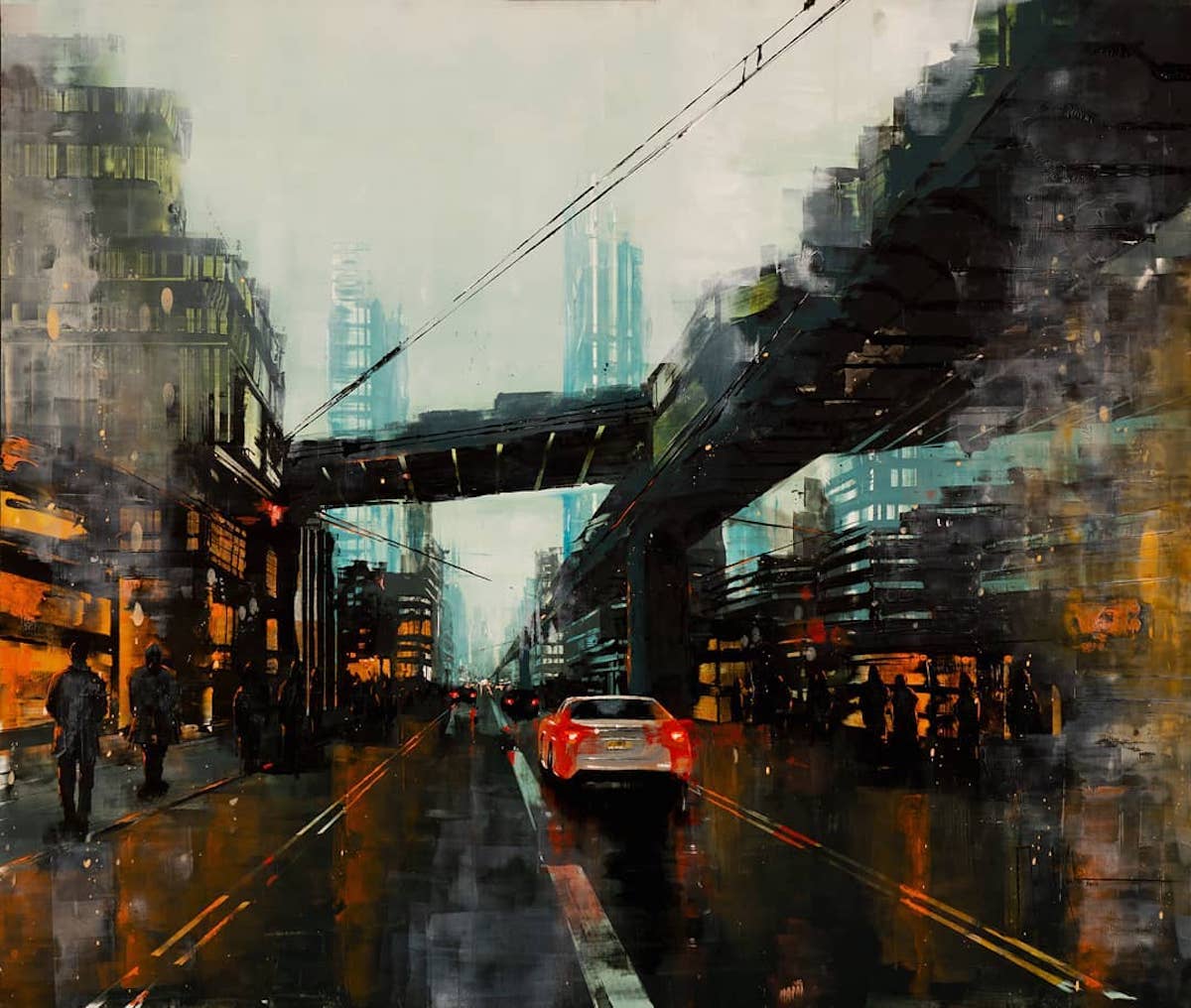 How did you start making art?
How did you start making art?
I’ve been drawing with a pencil all my life. But never with colors and never a city. I can’t say exactly why, but I always wanted to save the color until I found the right motif. In my 20s, I made a bucket list. At the top, it said: “paint a city with color.” That was the beginning. That day is now five years ago. Hardly a day has passed since that date that I don’t paint a city with colors. Maybe I’m so obsessed with this motif because I’ve saved it for so long.
You specialize in cityscapes. What is it that draws you to this subject?
It’s a reassuring motive. You can look at it for hours and immerse yourself in it. At least one of my pictures hangs in almost every room in my house.
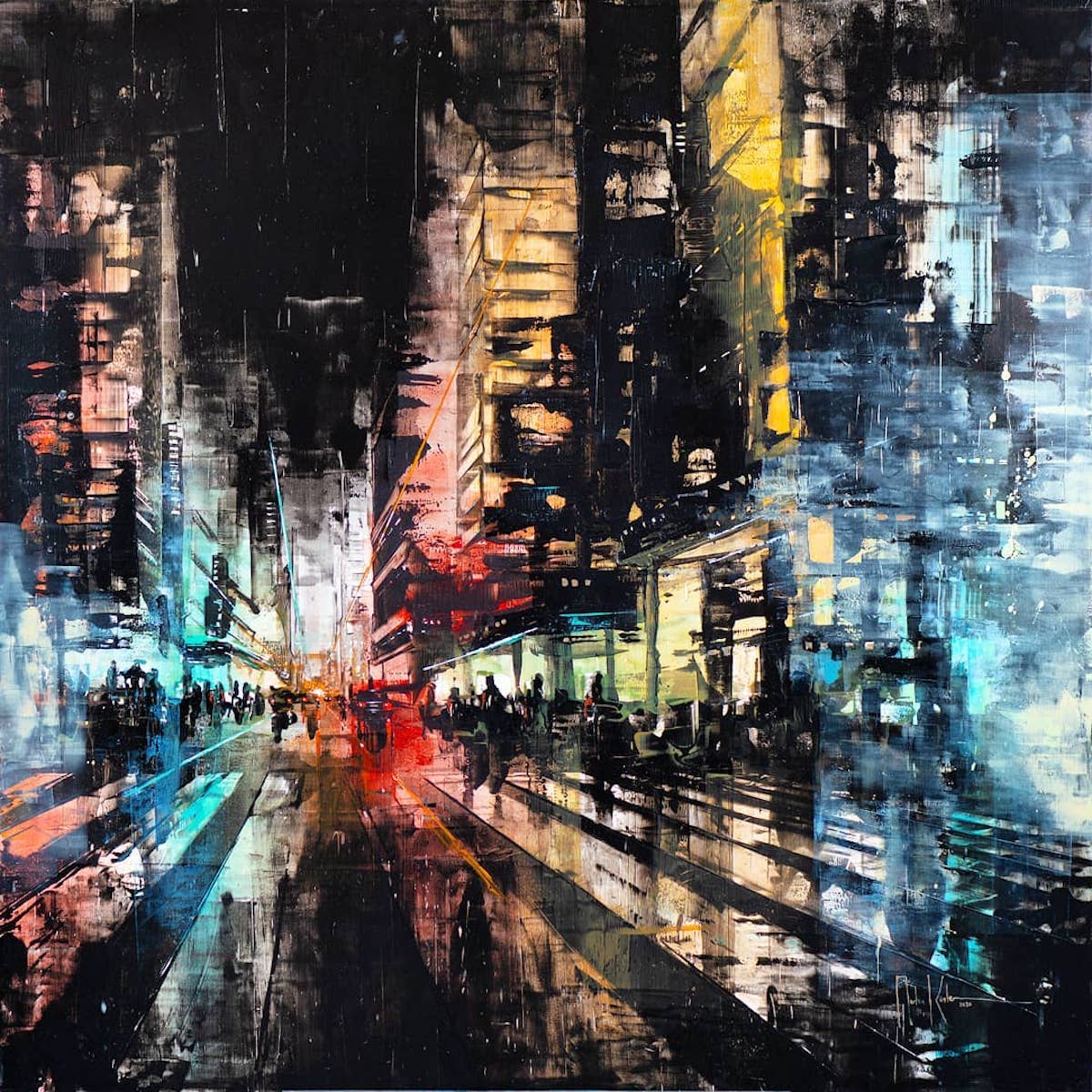
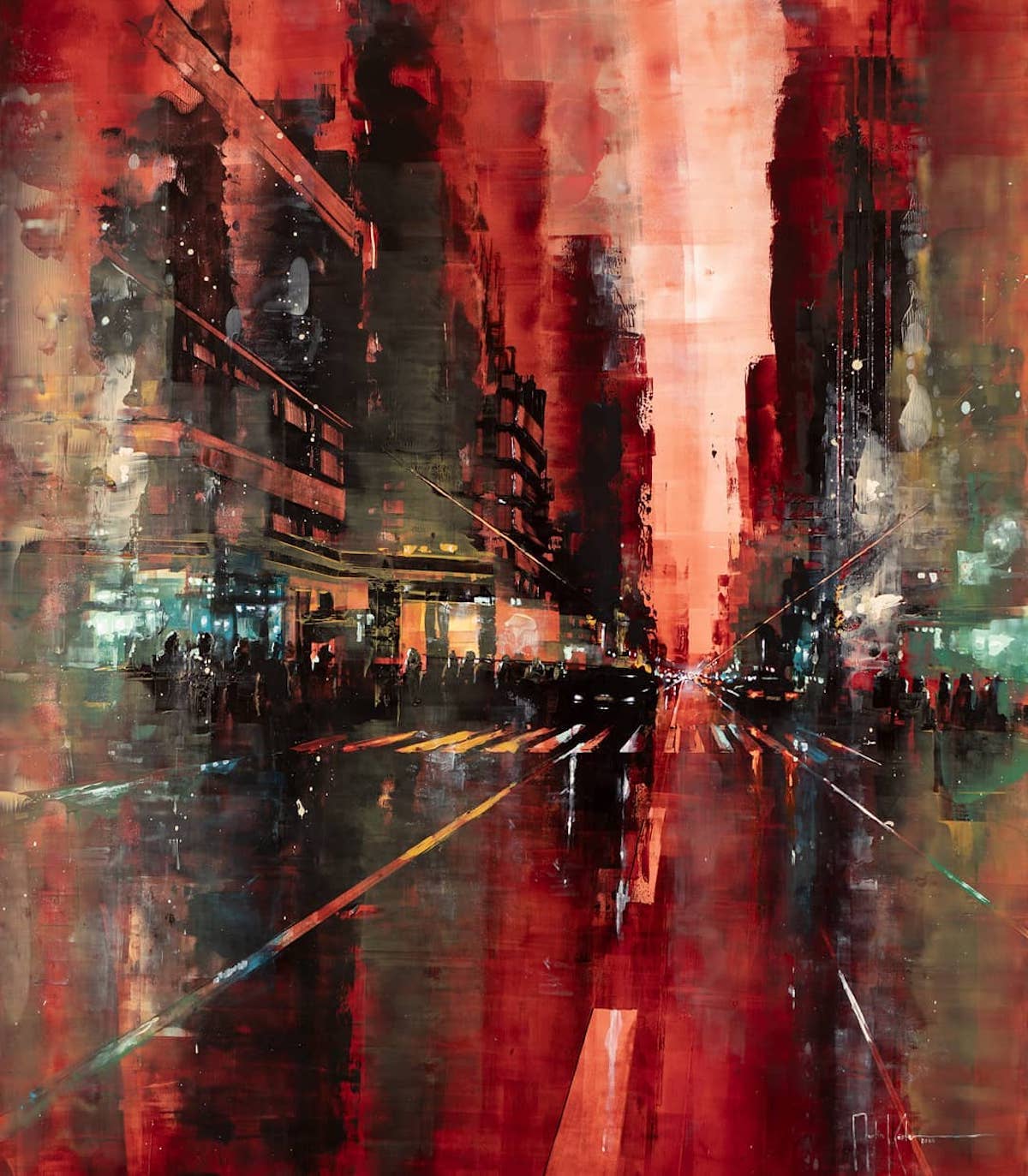 What do you try to achieve or express in each piece?
What do you try to achieve or express in each piece?
I like the idea that every light source in the city tells its own story. If many lights come together, a sea of stories emerge. When I walk through a new city, I walk slowly and feel these stories. People who live together in a confined space but also remain lonely. I try to capture those feelings in my paintings.
Most of your cityscapes appear to take place at night. Is there a reason for this?
Yes, I need the darkness of the buildings to let the light break out. This is how I create the maximum contrast.
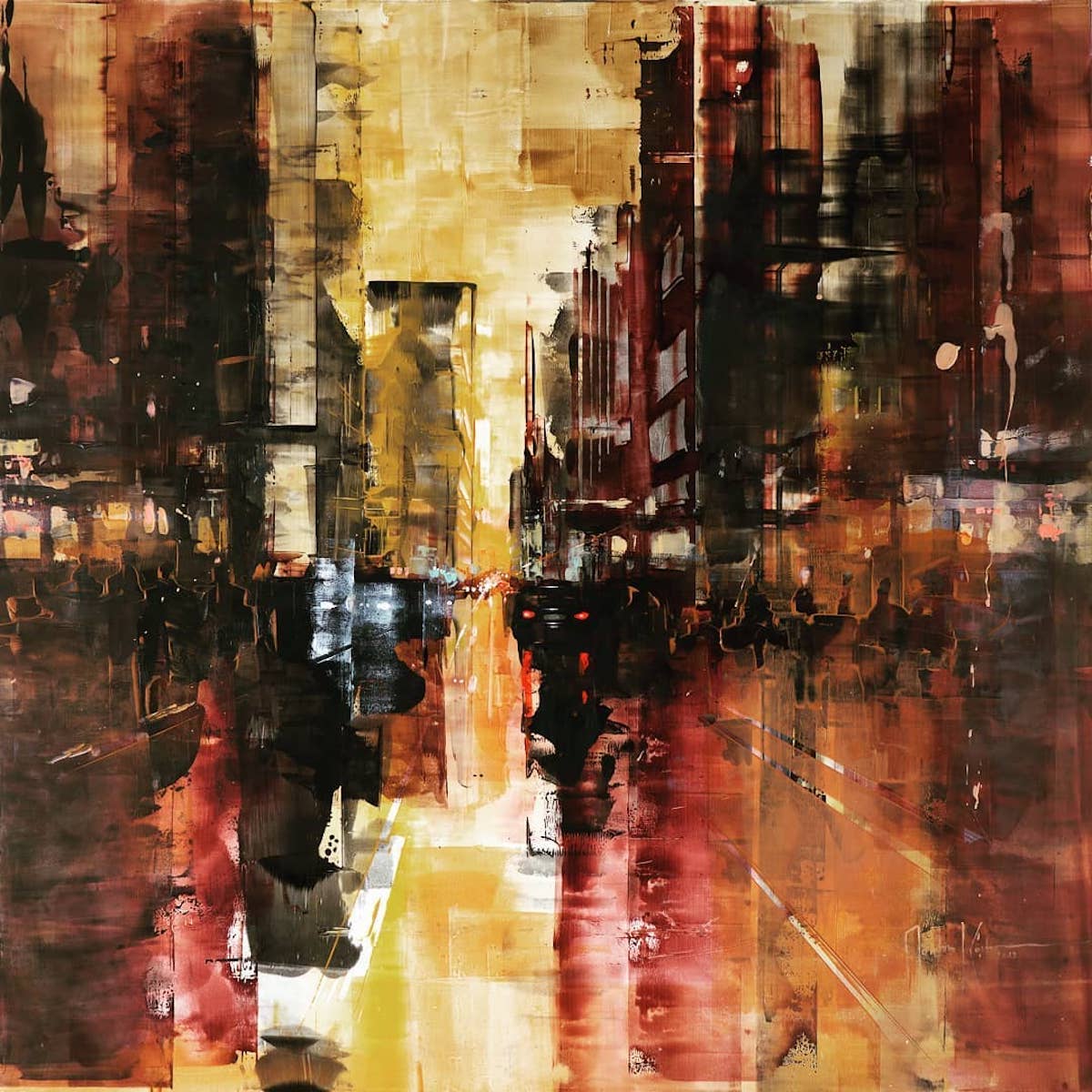
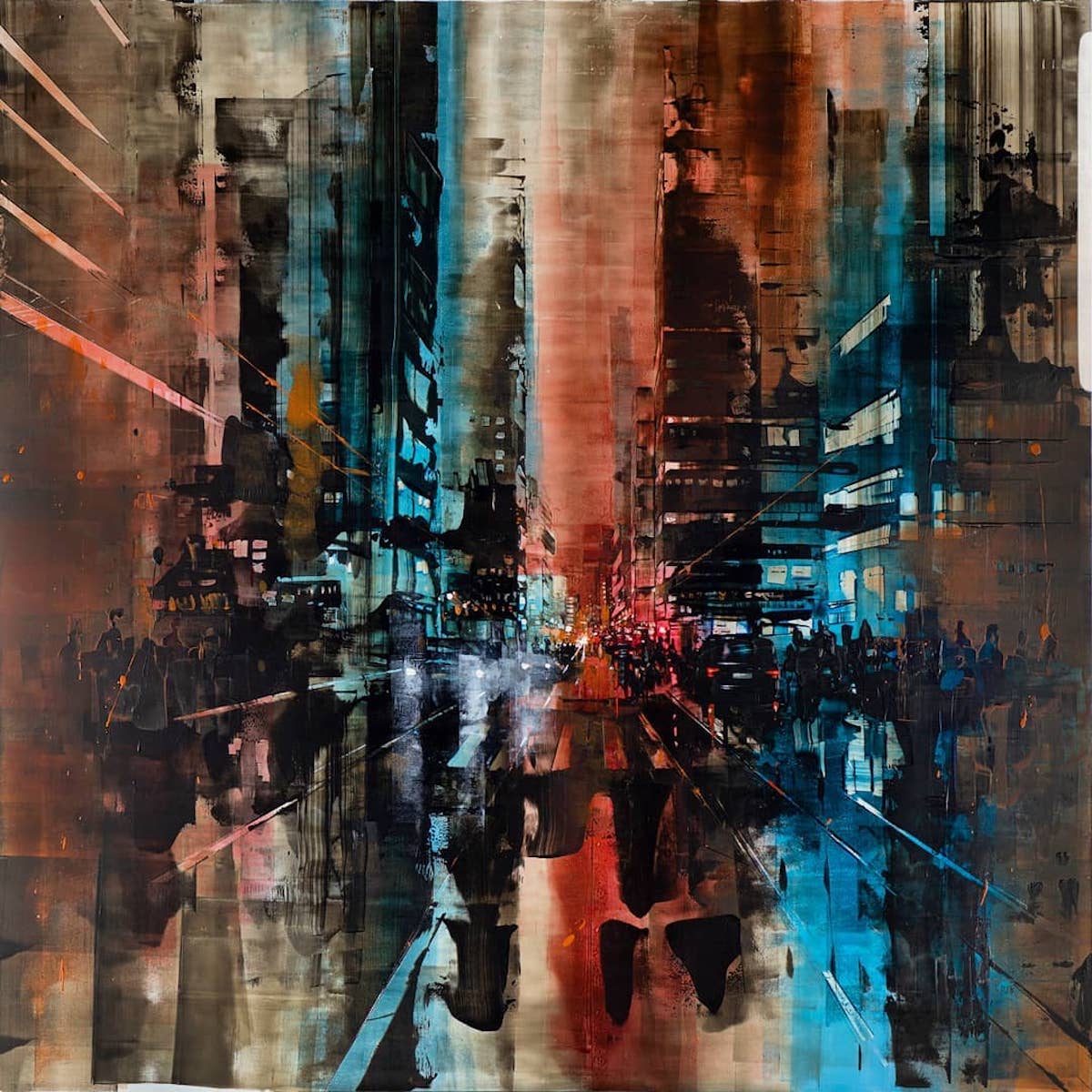 Walk us through your creative process. How do you choose which city to paint next?
Walk us through your creative process. How do you choose which city to paint next?
Often, collectors ask me if I can paint a particular city for them. I did this once and I didn’t like it. That was the moment when I realized that I had to look for my motives myself. I am lucky enough to be able to exhibit internationally. That’s why I often see foreign cities. Then I take photos in the city before the exhibitions and later I paint these photos. I now have a large collection.
Do you have a favorite place that you’ve depicted?
I like all cities with tall buildings very much. New York and Hong Kong are currently the biggest attractions for me.
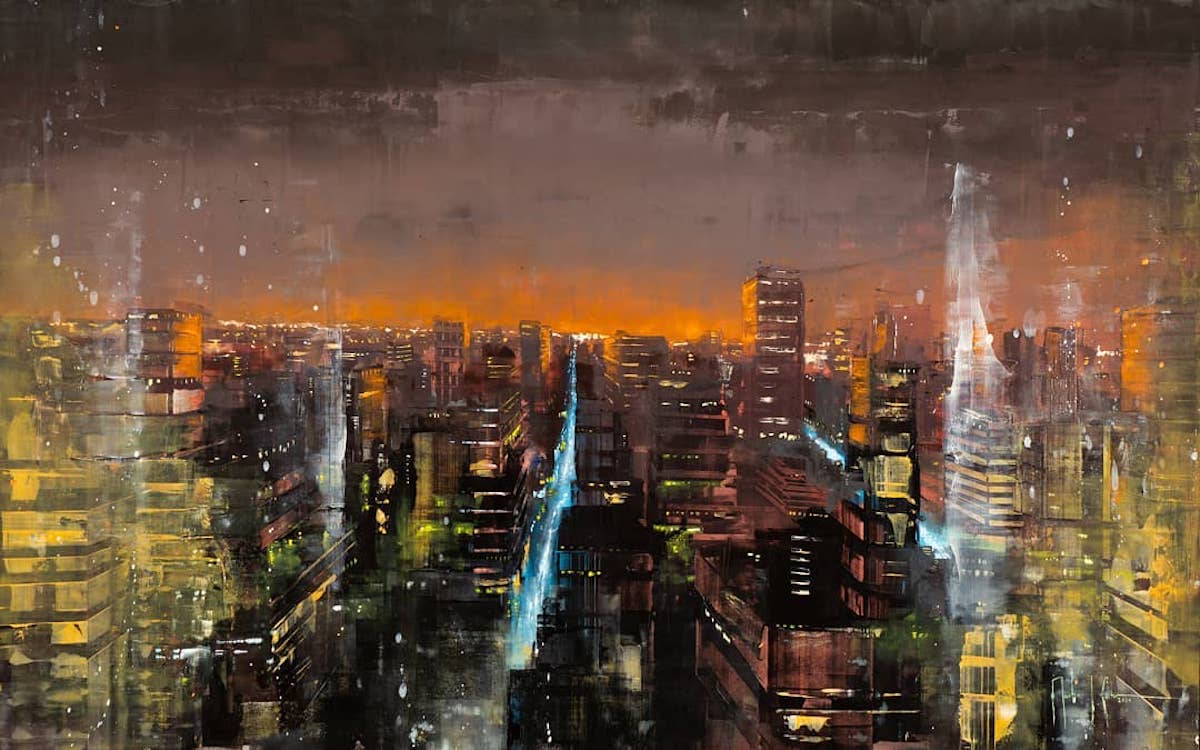
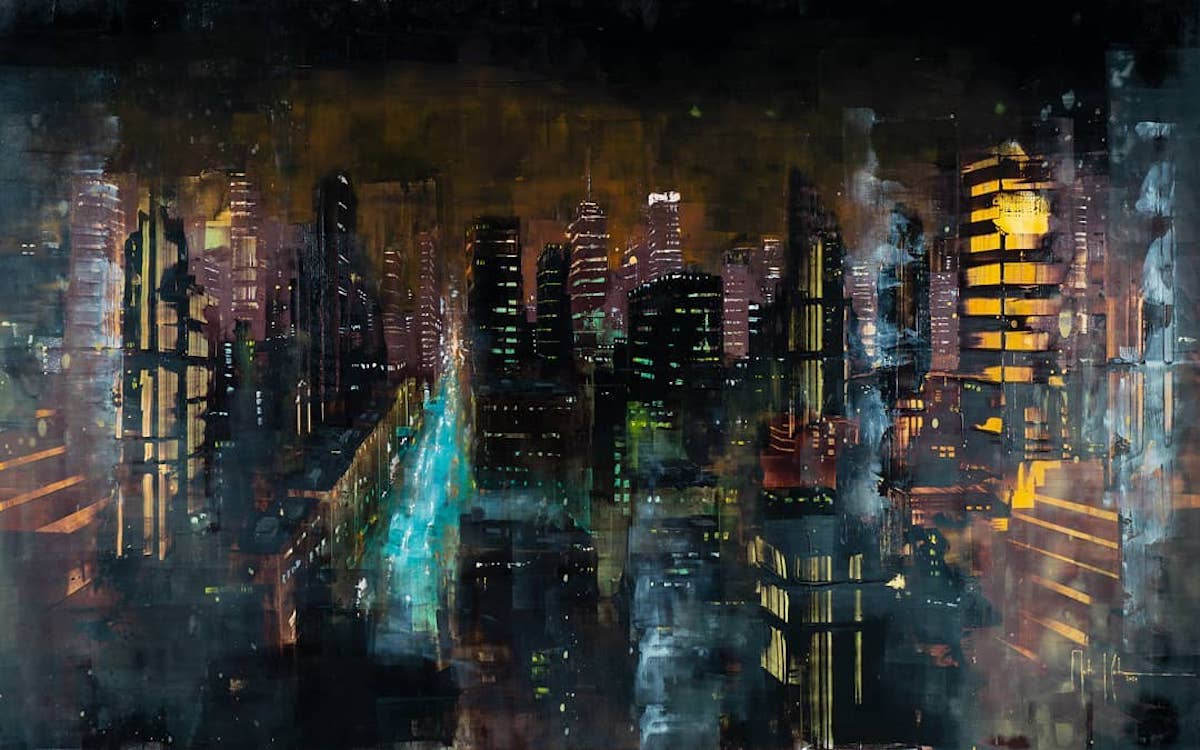 How has your artistic practice changed over time?
How has your artistic practice changed over time?
The colors have become stronger over time. The edges are more abstract. The light is more intense. I manage to concentrate better and better on the essentials. I don’t destroy as many pictures as I used to in the past. So I feel like I’m getting better.
What is your most important artist tool? Is there something you can’t live without in your studio?
I build many of my tools myself. My favorite tool is a spatula that I made out of sheet metal. I hope it will hold up a little longer and won’t break.
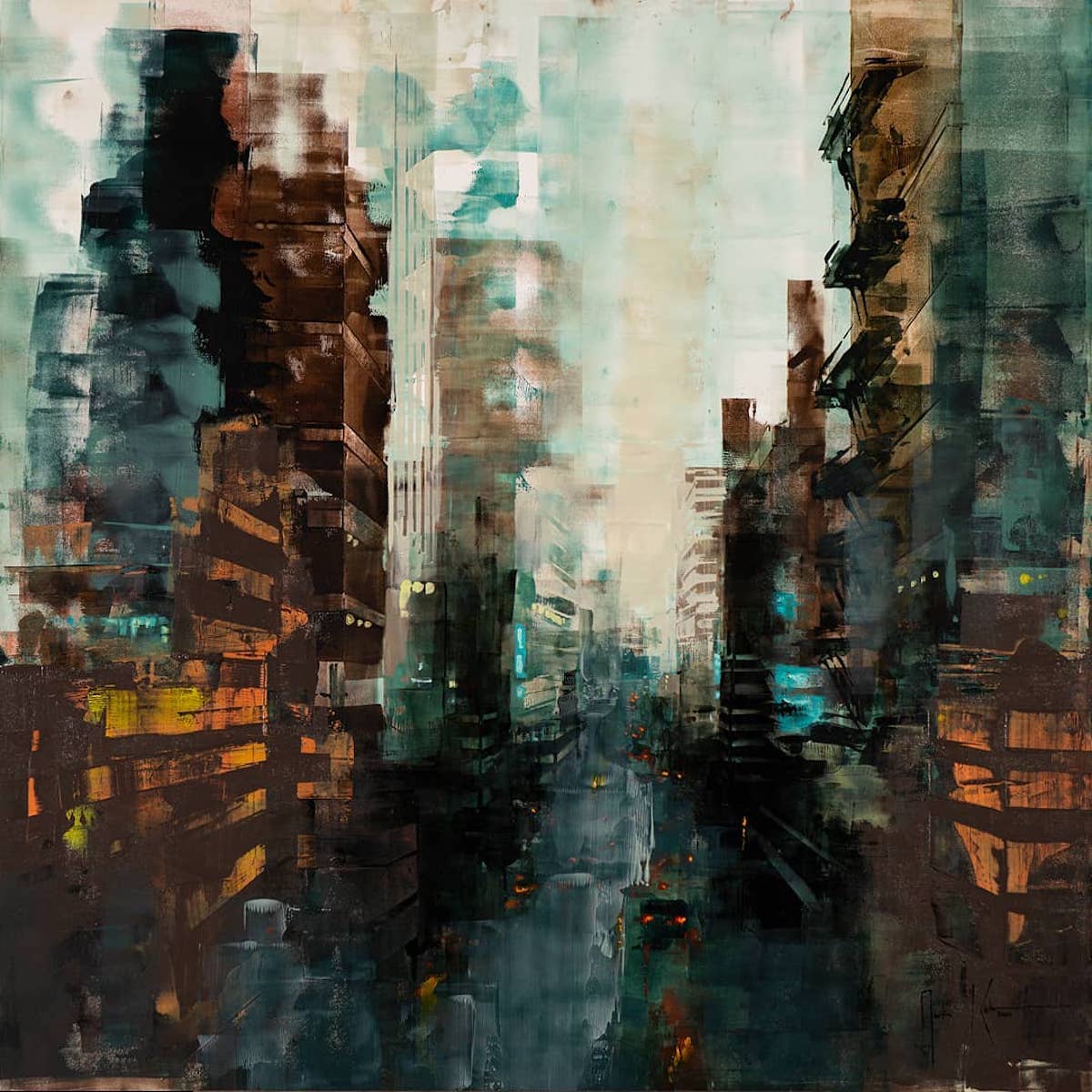
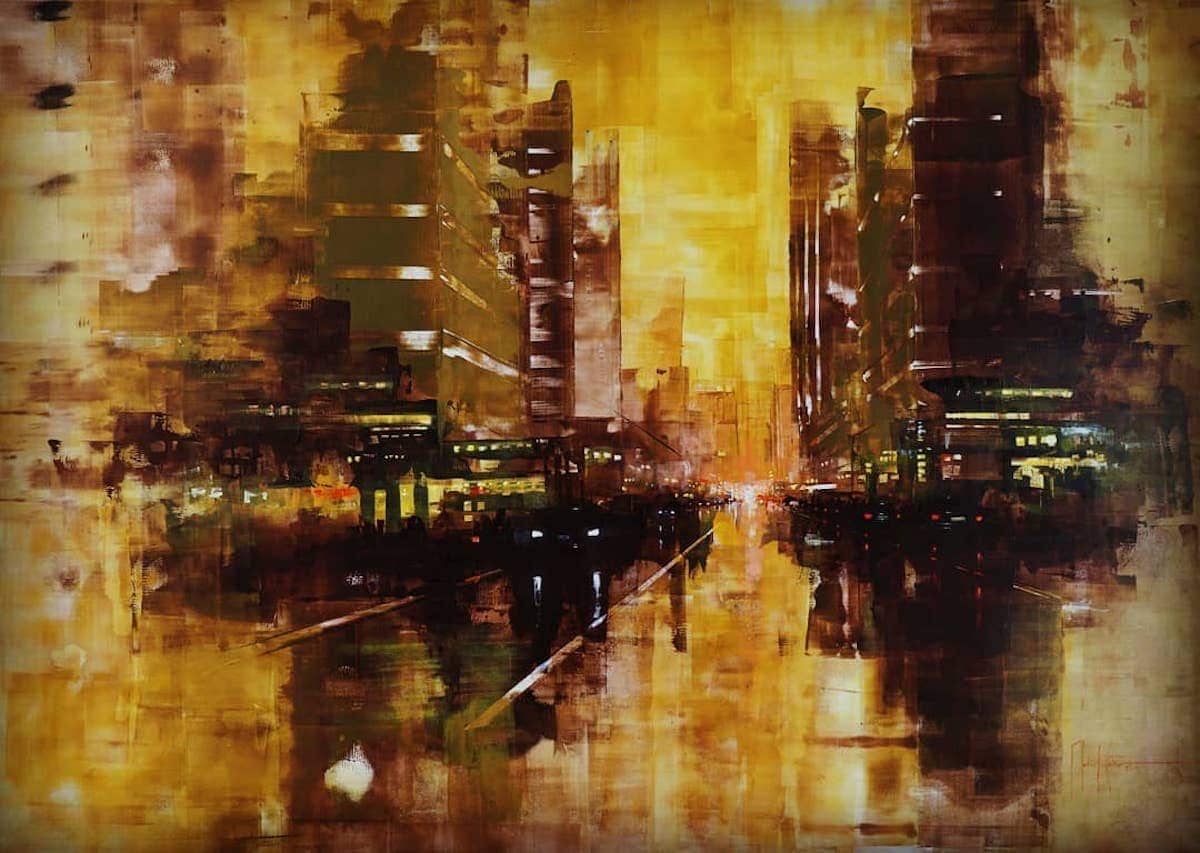 Is there an artwork you are most proud of?
Is there an artwork you are most proud of?
Mostly it’s my new works. These are then repeatedly replaced by new ones. An eternal cycle, but the best motivation for me. So I don’t get tired of painting the same motif over and over again.
Which artists, or works of art in particular, inspire you?
The painter of the Romantic era, William Turner, who is also specialized in the shining of light.
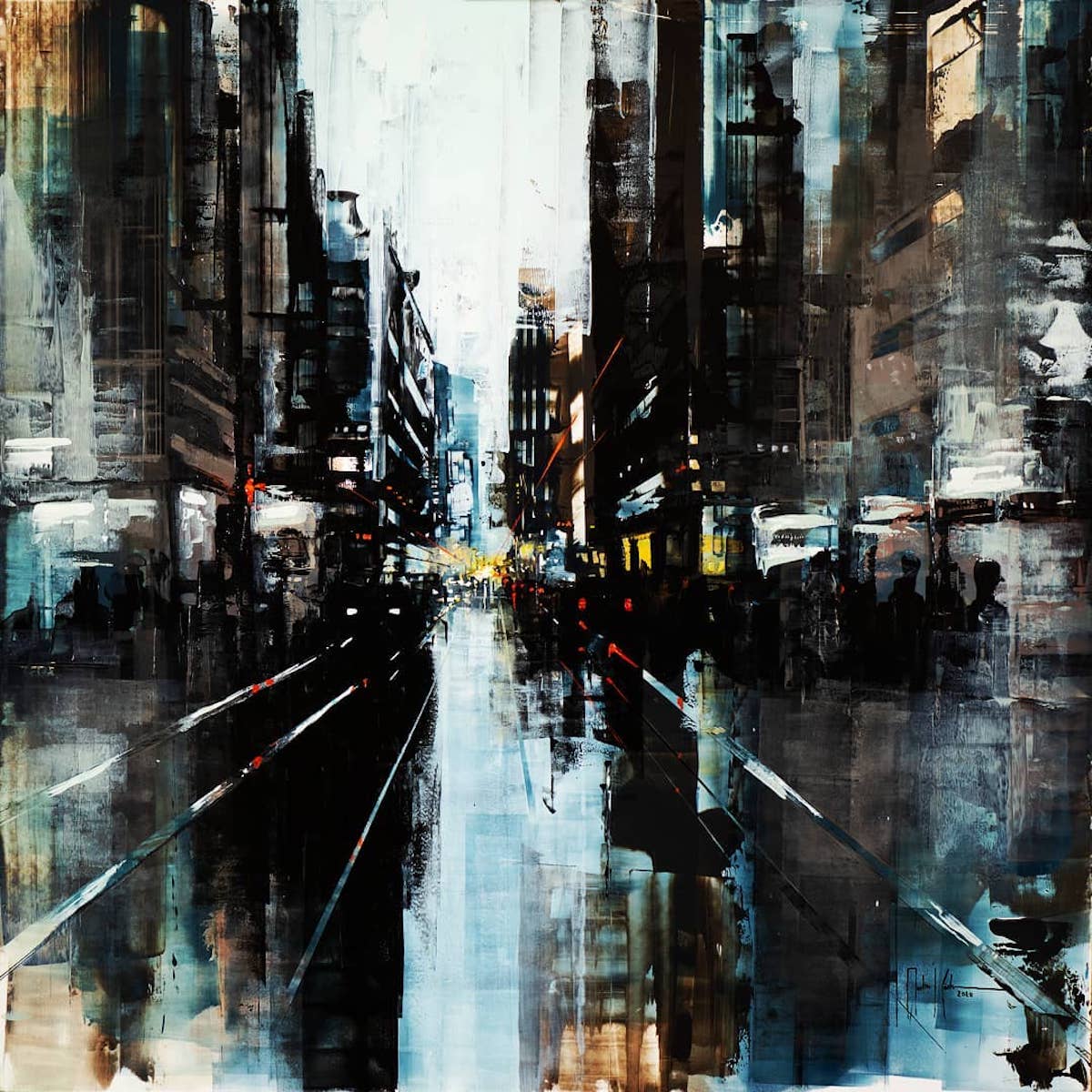
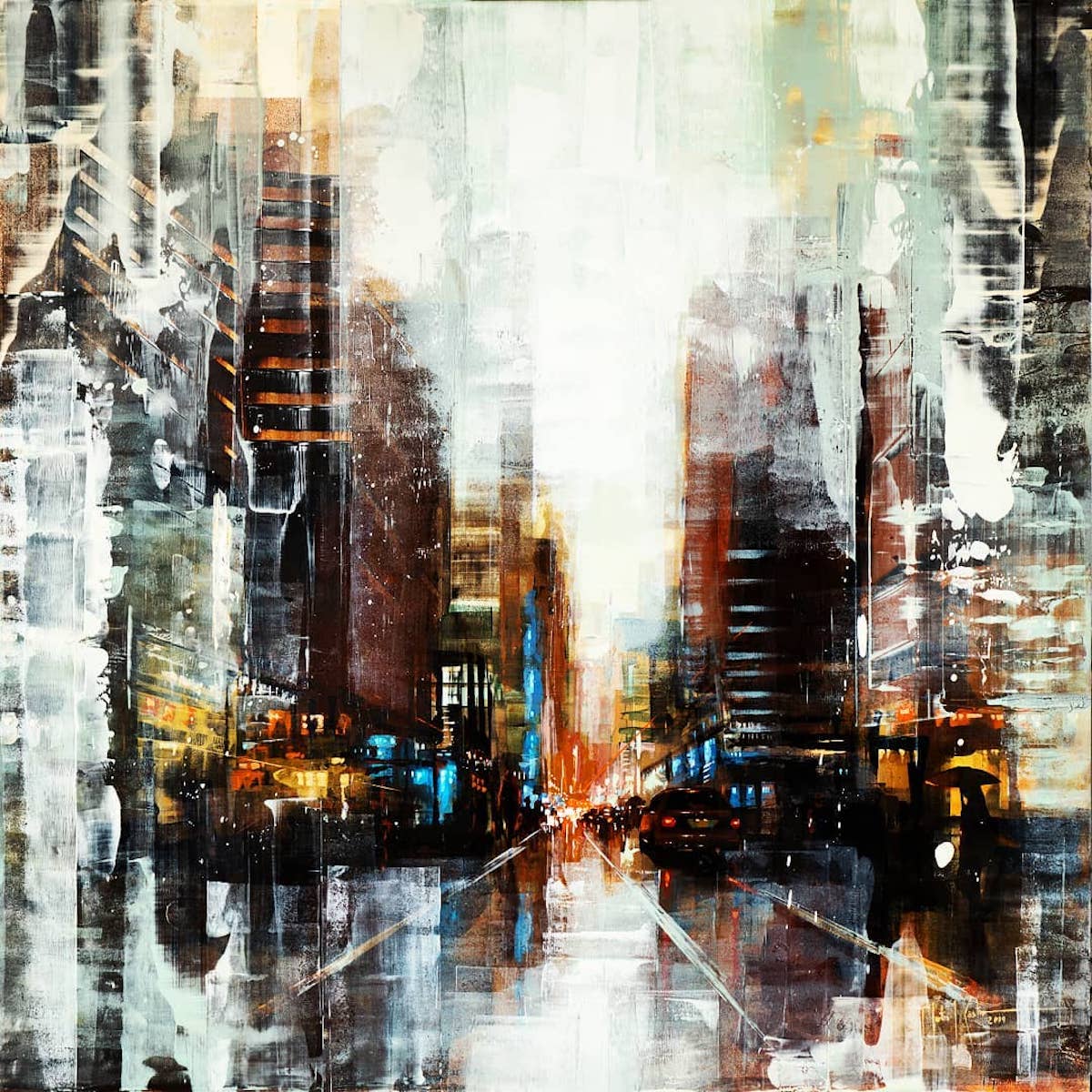 How do you know when a work is finished?
How do you know when a work is finished?
It is a very difficult moment. Sometimes I don’t know for sure. Then I work too long on a picture. Then, in the end, I realize that I should have stopped earlier. Sometimes I’m disappointed and don’t sign the work and put it in the farthest corner of my atelier. There is already a considerable collection there. Because the timing is so difficult, the joy is greater when I stopped at the right time.
What is the best thing about being an artist?
Endless freedom!
See more cityscape paintings by Köster:
